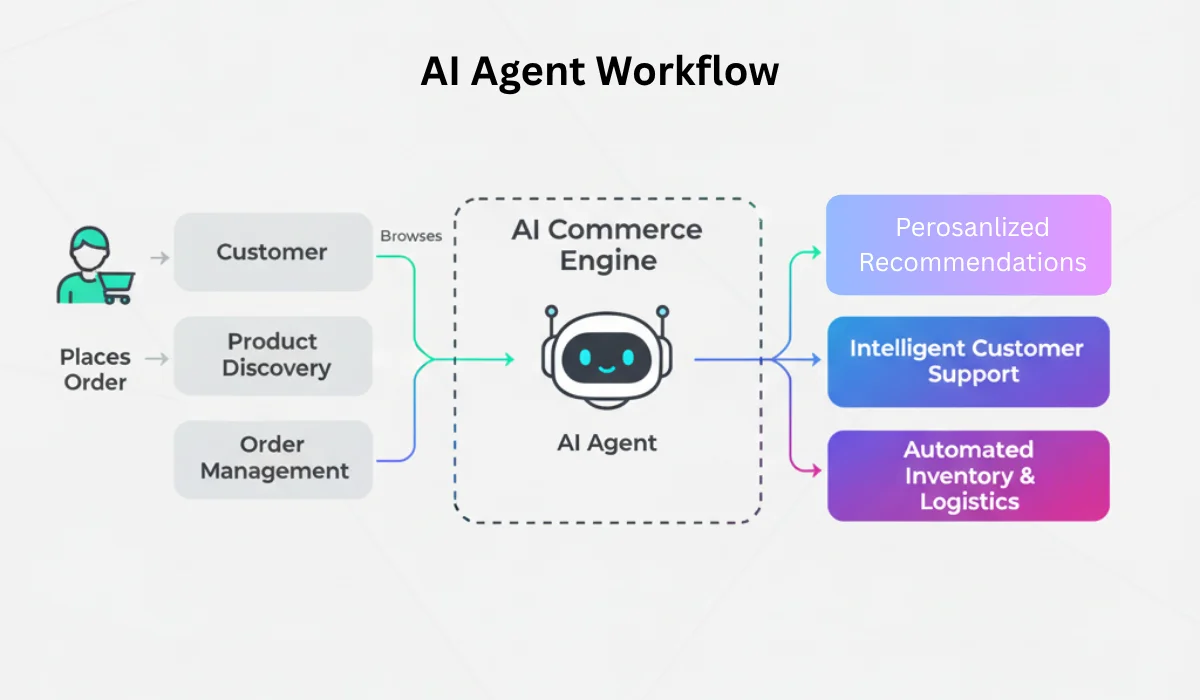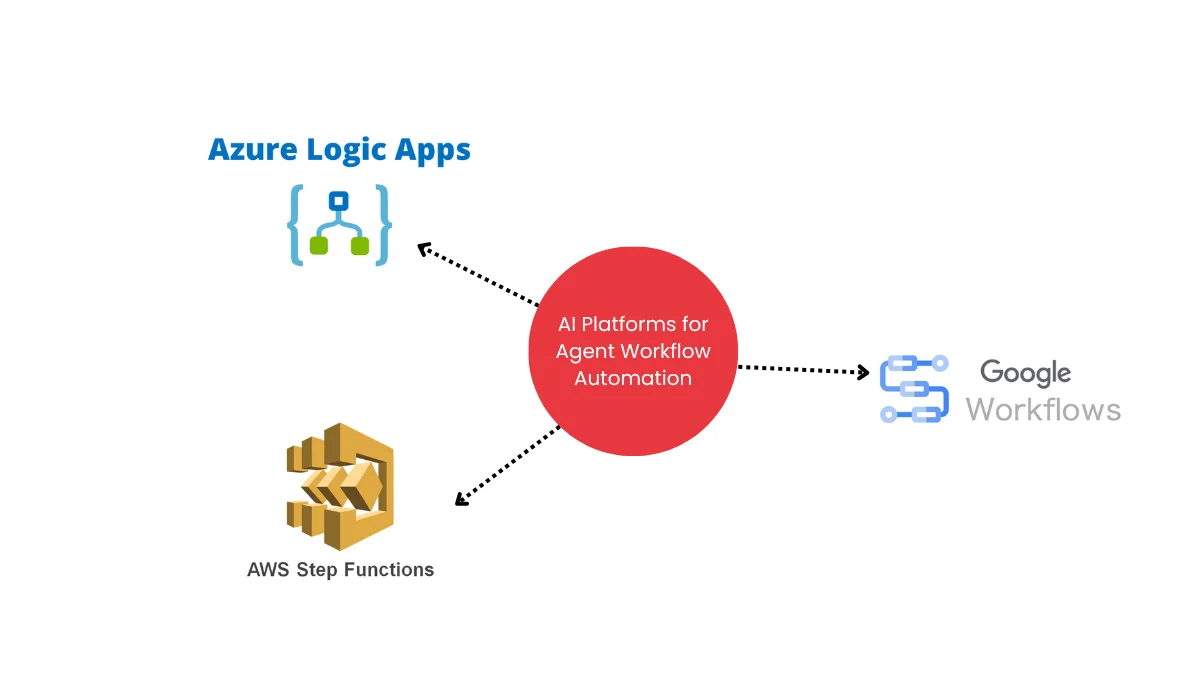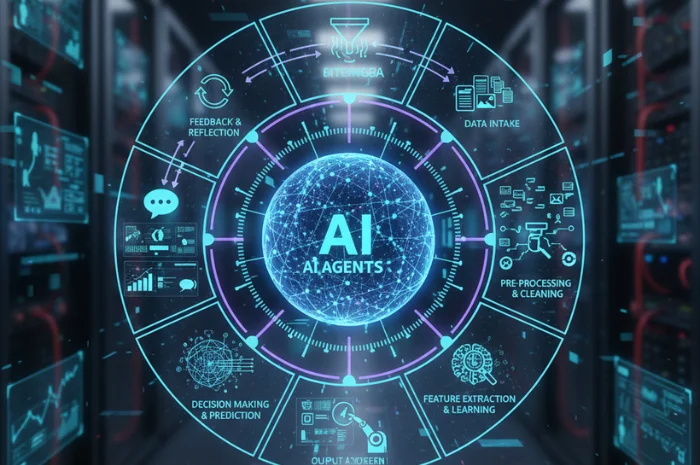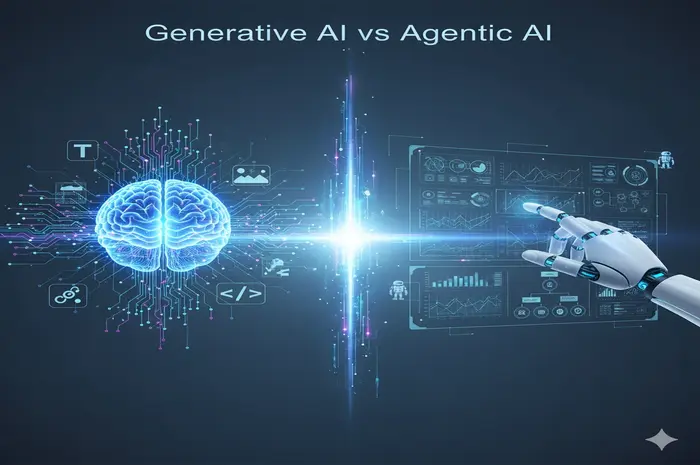If you’re looking to create an AI agent workflow, you’ve probably faced the same questions: Where do I start? How do I make AI agents for different business processes? And how do I make sure it actually improves efficiency instead of creating more work?
AI agent workflow automation can solve these problems, but only if it’s designed thoughtfully. Unlike basic automation, autonomous AI agents can monitor processes, make decisions based on real-time data, and adapt as conditions change. That means your workflows can run smarter, errors are reduced, and teams can focus on strategic work instead of firefighting.
In this guide, we’ll walk you through the step-by-step process of designing and deploying AI agent workflows that integrate seamlessly with your existing systems. You’ll learn how to identify triggers, define decision logic, and orchestrate agents so that your automation isn’t just theoretical, it actually delivers measurable value.
What is an AI Agent Workflow?

An AI agent workflow is a structured process in which autonomous AI agents manage tasks, make decisions, and interact with multiple systems without constant human intervention. Unlike traditional automation that follows fixed rules, these agents can analyze data, detect patterns, and adapt their actions in real time, making them highly effective for complex business processes.
In practical terms, the workflow of the AI agent often starts with a trigger, an event, data change, or scheduled action, that prompts the agent to evaluate the situation, make a decision, and execute tasks across connected systems. This cycle can include monitoring results, learning from outcomes, and continuously optimizing the workflow, which is the essence of workflow optimization with AI.
Also Read: Best Practices for Enterprise AI Agent Development
How to Build an AI Agent Workflow: Step by Step Process
1. Identify Workflow Triggers
The first thing you need to do is figure out what will make your AI agent start working. Think of it like pressing a button that kicks the process off. This could be something simple, like a new invoice entering your ERP system, or more complex, like a system alert signaling a failed backup. You might also have recurring triggers, such as a daily report that needs to run automatically. Mapping all these triggers clearly ensures your agents only act when necessary and don’t waste resources on irrelevant events.
2. Define Decision Logic
Once the agent is triggered, it needs to decide what action to take. This is where you outline the brain of your workflow. For straightforward tasks, you can use rule-based logic, for example, “If the invoice is less than $5,000, approve it automatically; otherwise, send it to a manager.” For more complicated situations, you can use AI reasoning, where the agent analyzes patterns, exceptions, or historical data to make decisions. The key is to draw out a clear map, a decision tree, so that for every trigger, the agent knows exactly what to evaluate and which path to follow.
3. Execute Actions
Once the decision is made, the agent moves into action. This is where your workflow starts affecting real systems. Actions could include updating a record in your ERP or CRM, sending notifications to a team via email or Slack, or triggering another workflow downstream through APIs. The important part here is to document which systems the agent interacts with, what data it needs, and what results it produces. Running small tests at this stage helps ensure that actions happen smoothly and don’t accidentally break anything.
4. Feedback Loops and Self-Learning
A big advantage of autonomous AI agents is that they can learn from their actions over time. After the agent executes an action, you need to monitor outcomes, whether tasks were completed correctly, how long they took, and where errors occurred. That information should feed back into your workflow so the agent can improve its decision-making automatically. For example, if an agent repeatedly flags certain invoices for manual review that were fine, you can adjust the rules or retrain the AI model. Setting up dashboards or monitoring tools at this stage helps track key metrics like efficiency, error reduction, and ROI.
Also Read: How to Build an AI MVP (Without Burning Your Budget)
Platforms to Build AI Agent Workflows

When implementing AI agent workflow automation, choosing the right platform is critical. The platform determines how easily agents can scale, integrate with enterprise systems, and adapt to evolving business needs.
-
Cloud Platforms
Cloud platforms provide flexibility and scalability for enterprise workflows. Services like AWS Step Functions, Azure Logic Apps, and Google Cloud Workflows allow teams to deploy agents quickly, manage multiple workflows simultaneously, and connect seamlessly to cloud-based applications. These platforms are ideal for organizations that prioritize speed and scalability over complete on-premise control.
-
Low-Code / No-Code Tools
For teams that want faster deployment without heavy development effort, low-code or no-code platforms like n8n, Zapier, or Make can help. These tools allow users to create automated workflows using drag-and-drop interfaces while still leveraging autonomous AI agents for decision-making. They are especially useful for automating repetitive tasks across systems with minimal coding.
-
Enterprise RPA + AI Platforms
Organizations with complex processes often combine Robotic Process Automation (RPA) with AI capabilities. Platforms like UiPath or Automation Anywhere provide advanced orchestration, multi-agent management, and integration with ERP, CRM, and other enterprise systems. They are well-suited for mission-critical processes requiring reliability and auditability.
-
Custom AI Agent Workflows
Off-the-shelf platforms may not meet all business needs. In such cases, working with an AI agent development company can help design custom workflows. Custom workflows allow businesses to define triggers, decision layers, and multi-agent orchestration tailored to their unique processes. This ensures AI agents operate effectively across complex systems, maintain compliance, and deliver measurable value.
Key Considerations When Choosing a Platform:
- Integration capability with existing ERP, CRM, and databases
- Scalability to add more agents as workflows expand
- Ease of monitoring, governance, and maintenance
- Support for custom workflows when out-of-the-box options are insufficient
By selecting the right platform or combining off-the-shelf and custom solutions, organizations can implement AI agents for business processes that are flexible, reliable, and aligned with their operational goals.
Common Mistakes You Can Make While Creating AI Agent Workflow
- One frequent mistake is over-automation without proper governance. Automating processes blindly can create errors that multiply before anyone notices.
- Poor data quality is another trap; AI decisions are only as reliable as the data fed into them. Integration gaps between systems or tools can stall workflows, causing delays instead of savings.
- Unrealistic ROI expectations often lead to disappointment, AI agents for business processes take planning, tuning, and adoption time.
Avoid these pitfalls by starting small, validating outputs, and building governance rules. Monitor data health continuously and map integration points carefully. Setting realistic goals ensures your autonomous AI agents deliver measurable value without surprise setbacks.
Conclusion
Designing an AI agent workflow isn’t just about setting up automation, it’s about creating a system that can think, act, and improve over time. By carefully defining triggers, mapping decision logic, executing actions reliably, and incorporating feedback loops, you can build workflows that reduce errors, save time, and free your teams to focus on strategic priorities.
Choosing the right platform, coordinating multiple agents, and avoiding common pitfalls ensures your automation is scalable, secure, and aligned with business goals. Starting small with a pilot, monitoring performance, and iterating gradually turns AI agent workflows from an experiment into a sustainable, enterprise-wide capability.
If still in doubt, consult AI agent development experts. They know the best for your business.
FAQs
1. How do I design an AI agent workflow step by step?
Start by defining the goal of your AI agent, then identify the trigger events that will start the workflow. Map the sequence of actions and decisions the agent should take, integrate AI functions via APIs or services, and decide where outputs and logs will be stored. Test the workflow with sample data and refine it before scaling.
2. Which platform should I use for AI agent workflow automation?
Zapier and Make are ideal for simple automations and SaaS integrations, n8n offers flexibility and custom code for complex workflows, and Azure Logic Apps or Power Automate are suited for enterprise-scale or Microsoft-centric environments. Choose based on workflow complexity and ecosystem compatibility.
3. How can I connect my AI agent to multiple apps and services?
Use built-in connectors for common apps, webhooks or APIs for unsupported services, and, if needed, code blocks to transform or route data. Always test connections to ensure data flows correctly and AI outputs integrate reliably across apps.
4. Is it worth hiring an AI agent development company for my workflow automation?
Hiring an AI agent development company can save time and reduce risk, especially if you’re new to workflow automation. Experts bring experience in designing scalable architectures, integrating AI with multiple platforms, and handling errors and data management efficiently. They can accelerate implementation, ensure best practices, and help you get faster, more reliable results than building everything in-house from scratch.






